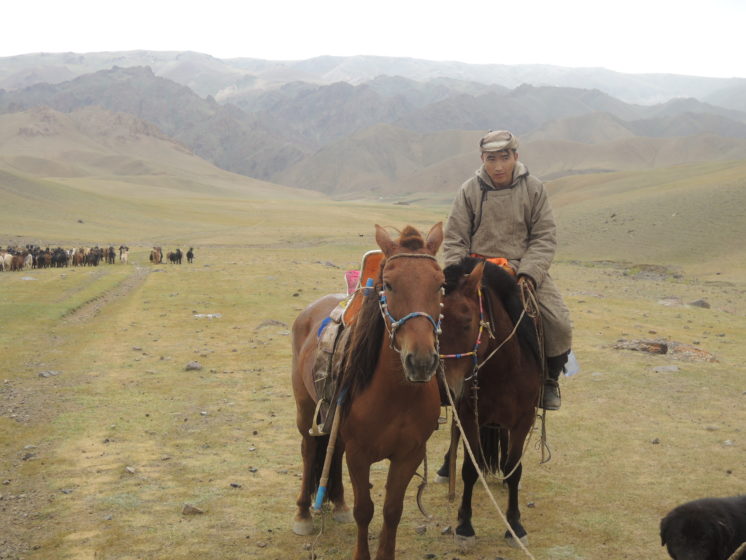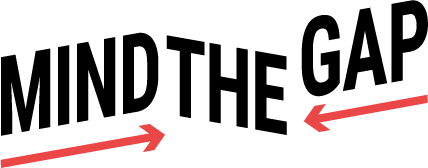Iron ore producer Altain Khuder filed criminal charges against Mongolian environmental defenders after they criticised the Tayan Nuur mine, showing how corporations can seek to intimidate their critics and drain their resources.
 Photo: SOMO
Photo: SOMOAltain Khuder is an iron ore producer in Mongolia that has operated the Tayan Nuur mine in the Gobi-Altai Province of Mongolia since 2006.[1] In January 2012, US$ 30 million in financing was approved by the European Bank for Reconstruction and Development (EBRD) for Altain Khuder’s operations at the Tayan Nuur mine in Tseel Soum, Gobi-Altai Province.[2] The area surrounding the mine is home to over 2,000 nomadic herders who rely on the land for raising their animals.[3]
A fact-finding mission by SOMO (the Centre for Research on Multinational Corporations), CEE Bankwatch Network and Oyu Tolgoi (OT) Watch collected testimonies from residents and noted, “dust from the road and mine covers the pasture, allegedly causing illnesses when animals graze, including goats, sheep, cattle, camels, yaks, and horses. Herders reported having lost up to several dozen animals due to dust-related illnesses.”[4]
When people began raising concerns about the environmental impacts of the mine, Altain Khuder quickly filed criminal charges against five environmental defenders – accusing them of defamation “with the intention to cause damage to the company’s business”.[5] These local community members were charged with “organized crime with intent to damage or takeover property” through dissemination of information damaging to reputation.[6]
The prosecution originally dropped the charges for “lacking substance”, but Altain Khuder appealed against these dismissals and took the case to a higher court in the capital Ulaanbaatar.[7]
Dragging these legal cases out for almost two years meant that the human rights defenders had to travel more than 1,200 km on multiple occasions in order to appear in court in Ulaanbaatar. Each time the defendants had to travel to court, they were forced to leave their herds and incur the additional costs of travel and lost working time.[8] In May 2014, the prosecution procedures were finally abandoned and the environmental defenders were acquitted of all charges.
In addition to these environmental defenders, an NGO and three of its workers faced legal struggles after criticising Altain Khuder.[9] This time, however, the case went to civil court as Altain Khuder sued the NGO and its workers for defamation, accusing the defendants of organised crime against private property. The lawsuit remained unsuccessful, but it did cause the NGO to refrain from further criticism of the company until the lawsuit had been resolved.[10]
Even though all the charges or lawsuits against critics of Altain Khuder were eventually dropped, the company was successful in draining the resources of and intimidating its critics. This strategy to respond to criticism exploits the legal process in a manner that has a chilling effect on human rights defenders who normally do not have the time or resources to stand up to a mining company such as Altain Khuder.
[1] Stichting Onderzoek Multinationale Ondernemingen – Centre for Research on Multinational Corporations (SOMO), “Iron ore mine threatens nomadic herders in Mongolia,” December 17, 2014, https://network.somo.nl/iron-ore-mine-threatens-nomadic-herders-in-mongolia/ (accessed October 28, 2019).
[2] Central and Eastern Europe Bankwatch Network, “Dust, displacement, intimidation – Mongolian herders are under pressure by iron ore mine,” blog, December 9, 2014, https://bankwatch.org/blog/dust-displacement-intimidation-mongolian-herders-are-under-pressure-by-iron-ore-mine (accessed October 28, 2019).
[3] Sukhgerel Dugersuren and others, When the dust settles: Impacts of the Tayan Nuur iron ore mine on nomadic herders’ lives in the Gobi Altai mountains of Mongolia (Prague: Central and Eastern Europe Bankwatch Network, 2014), 23., https://bankwatch.org/wp-content/uploads/2012/01/when-dust-settles-AltainKhuder.pdf (accessed October 28, 2019).
[4] Central and Eastern European Bankwatch Network.
[5] Central and Eastern European Bankwatch Network.
[6] SOMO.
[7] Dugersuren and others.
[8] Central and Eastern European Bankwatch Network.
[9] SOMO.
[10] Sukhgerel Dugersuren and others, p. 36.
